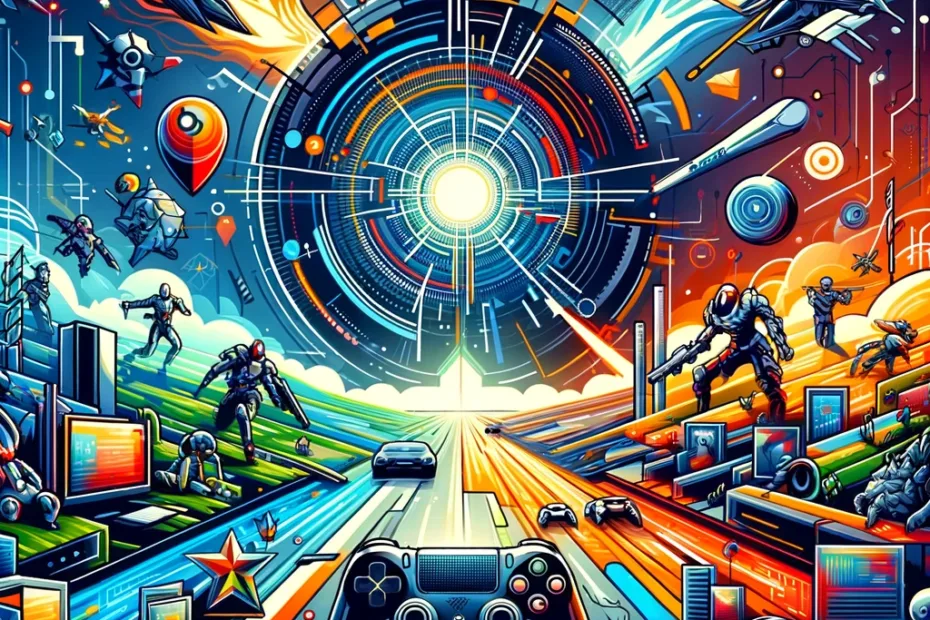The Rise of Digital Gaming
The transition from physical arcades to the digital realm marks a significant chapter in the history of gaming. It began with simple yet iconic games like Pong and Space Invaders, which introduced the world to the potential of video gaming. The 80s and 90s saw the rise of home consoles and personal computers, making gaming a household activity. Franchises like Super Mario and The Legend of Zelda became household names, setting the foundation for narrative-driven and complex gameplay. This era not only expanded the gaming market but also introduced the concept of gaming communities, as players began connecting over their shared love for certain titles.

Current Trends in Gaming
In the current gaming landscape, diversity and innovation are at their peak. Battle Royale games like Fortnite and Apex Legends dominate in terms of player count and viewer engagement, thanks to their competitive nature and community-driven events. Indie games, such as Stardew Valley and Hollow Knight, have also seen a surge in popularity, offering unique, story-rich experiences that contrast with the high-octane action of their mainstream counterparts. The common thread among trending games today is their ability to foster communities, whether through shared challenges, collaborative gameplay, or competitive arenas.

Technological Advancements in Gaming
The gaming experience today is vastly enhanced by technological advancements. Virtual Reality (VR) and Augmented Reality (AR) have opened new realms of immersion, allowing players to step inside their favorite games. Meanwhile, Artificial Intelligence (AI) has revolutionized game design and interaction, creating more dynamic and responsive game worlds. The hardware too, from next-gen consoles to cutting-edge PC components, has kept pace, delivering breathtaking graphics and seamless gameplay that were unimaginable a decade ago.

Gaming Communities and Culture
Gaming communities are the backbone of the industry, turning individual gaming experiences into a shared social phenomenon. These communities thrive in various spaces, from online forums and social media platforms to in-game chat rooms. They share tips, create content, and often influence the development and success of games. The culture around gaming has evolved, with esports turning competitive gaming into a professional sport, attracting sponsorships, and large audiences akin to traditional sports.
The Future of Gaming
Looking ahead, the future of gaming holds exciting possibilities. Cloud gaming promises to make high-end games more accessible, eliminating the need for powerful hardware. Cross-platform play is breaking down barriers between different gaming devices, fostering a more unified gaming community. Innovations in AI and machine learning are set to create more dynamic and immersive game worlds, potentially revolutionizing storytelling and gameplay. As technology and creativity continue to intersect, the next wave of trending games will likely push the boundaries of what we currently consider possible in gaming.
Conclusion
The landscape of trending games is a reflection of technological advancements, cultural shifts, and community engagement within the gaming industry. From the early days of arcades to the immersive virtual realities of today, gaming continues to evolve, offering new experiences and ways to connect. As we look to the future, the potential for innovation and community building in gaming remains boundless, promising an exciting journey ahead for gamers around the world.


